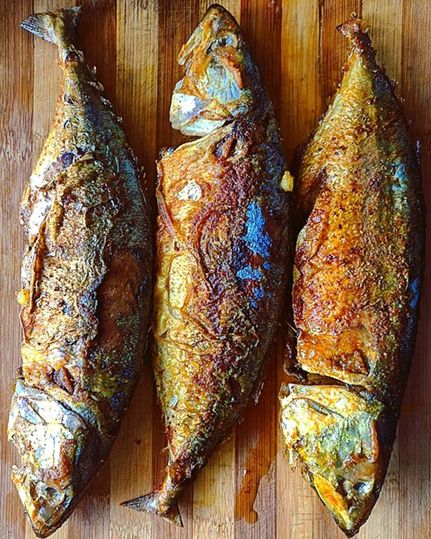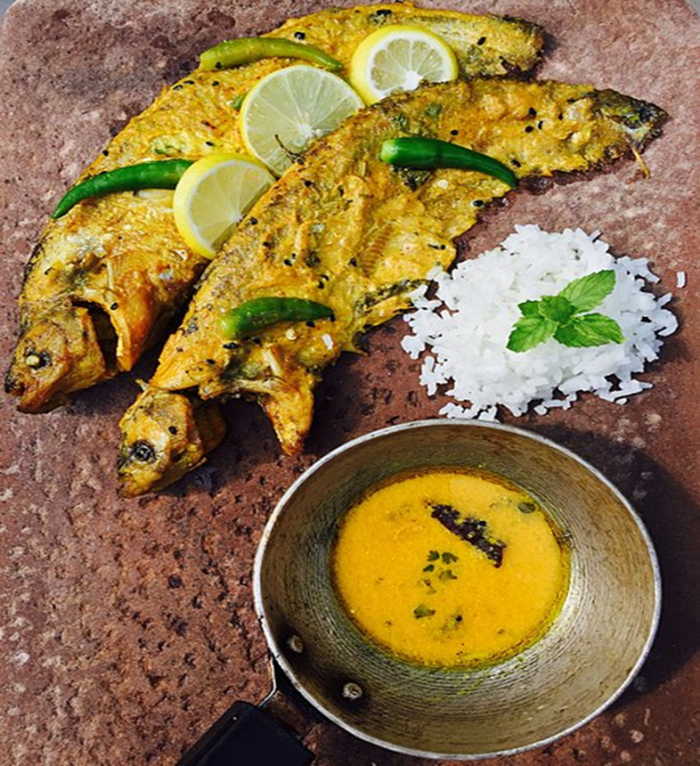

Traditionally people used to consume food easily available to them locally and fish was one of them. Different varieties of fish are used as food in all parts of the world. It has been an important food which is full of several nutrients. In all countries of the world, humans use different fish either freshwater or marine, as their food. Throughout human civilization, fish remained some food rich in nutritional value. In the context of food and fishing, fish can also refer to so-called shellfish like molluscs, crustaceans, and echinoderms. More broadly speaking, seafood includes both fish and other sea creatures, which are consumed for sustenance.
People in an area typically eat what is readily available to them. In Bengal, for instance, where there are numerous hot and dry coastal regions, rice and fish are the main staple foods. Fishing has always been significant to Bengali culture, as shown by numerous examples in the literature, sculptures, and art of the region.
For instance, ceramic plaques depicting scenes of fish being cooked and sent to the market in baskets can be found on the walls of temples and viharas (Buddhist monasteries).
In Bengal, since Fish is a staple food, therefore, Brahmanical authorities were permitted to consume some types of fish, despite the fact that their religion forbids eating it. This is according to the Brihaddharma Purana, a document written in Sanskrit in the thirteenth century.
All of these show how the regional culture of Bengal evolved, where the consumption of fish is away from the debate of fish as being a non-vegetarian or vegetarian food to be consumed by religious groups of the society.

Mackerel as a food item
Pkd2512, CC BY-SA 4.0
Fish farming is used worldwide to raise almost half of the fish that people eat today. Fish including tuna, salmon, halibut, cod, and trout are frequently raised in aquaculture. In addition to concrete enclosures on land, aquafarms can also take the shape of mesh cages submerged in water. By introducing diseases, contaminants, and invasive species, fish farms, however, have the potential to harm the ecosystem.
In 2015, Asia used more than two-thirds of the 149 million tonnes produced globally (106 million tonnes at 24.0 kg per capita). The lowest percentages were from Oceania and Africa. The shift is the result of structural changes in the industry, particularly the expanding role of Asian nations in fish production, as well as a sizable shortfall between the economic growth rates of the world's more developed fish markets and those of many crucial emerging markets around the globe, particularly in Asia.
Until 1961, the approximate increase in global annual fish consumption had risen by about 3.2 per cent. In fact, it has surpassed the population size ( about 1.6 per cent) and it even surpassed the demand for meat of terrestrial animals, both collectively and individually, with the exception of poultry (2.8%) (4.9%). The increase in annual use of fish consumption as food has been 1.5 per cent, taking it from 9.0 kg in 1961 to 20.2 kg in 2015. In addition to higher production, a number of additional variables, such as lower waste, better use, enhanced distribution systems, and rising consumer demand associated with a rise in population, and urbanisation, have contributed to the expansion in consumption.

Sushmita Das, CC BY-SA 4.0
Initially, fish production was more or less based on the capturing of fish which was later replaced by fish production, which mainly refers to the type of mariculture or aquaculture where a number of fishes are reared and increased to use commercially. There are several methods of fish production
Capturing of fishes As the name suggests itself, here fishes are captured from different water bodies
Fish breeding It is the processing of cultivating specific fishes in a limited area in water bodies, under extreme care to get maximum productivity. This is also known as fish farming or pisciculture. It is further classified into two forms
Inland fishery refers to fishing in fresh waterbodies like rivers, ponds, lakes, etc. In this the production is average. Examples of fishes in this form are Rohu, Catla, carp, etc.
Marine fishery is basically fishing in sea and ocean water. It is of two types: Offshore and deep water fisheries. Examples of fishes of Marine fishery are Pomfret, Sardines, hilsa, etc.
Fish farming also included three different ways: - Extensive, Semi-intensive, and intensive. In extensive fish farming, fish productivity is based on the natural productivity of water, it required large ponds with minimal care. Semi-intensive, have relatively small ponds with more density of fish, and fertilizers are used to increase the natural productivity. Intensive farming is a highly maintained or managed form to produce maximum fish in limited or less amounts of water such as small ponds and tanks etc.
The consumption of fish as a staple food became common practice since it was readily available in the surroundings. Humans began to adopt various ways to capture and breed fish. Various types of fish are used throughout the world. Broadly speaking, as far as fish production is concerned, there are two categories of fishery- one is inland, captured in fresh water and the other one is the marine fishery, captured from the salty water of seas and oceans.
Several factors led to the rise in the production of fishery such as lower waste, and increasing demand by consumers due to population growth. With the increase in the consumption of fish worldwide, the frequency of aquaculture also went up.
During the medieval period, its consumption and production in coastal regions became very common, especially in Bengal. In fact Bengali inscriptions and literary sources also mention that the consumption of fish got associated with culture of the region and even consumed by the brahmanas.
Q1. What do you understand about aquaculture?
The breeding and rearing of aquatic life such as animals and plants. Here the breeding is done in different kinds of water bodies.
Q2. What are the advantages of fish farming?
It generated employment by creating jobs in aquaculture mainly in coastal regions.
It helps in evading malnutrition in impoverished areas of coastal regions because fishes are rich in nutritional value.
It also helped to cater to the increasing demand for fish.
Q3. What are the disadvantages of fish farming?
In fish farming, a large number of fish are produced, which leads to a large amount of excretion that pollutes the water.
The food required for fish production is way more than the fish yield, so resources are getting exhausted to feed fish.
Fish farms may contain a large number of bacteria
Q4. Which are the largest producers of fish in India?
The topmost states which produce a large amount of fish are Andhra Pradesh, West Bengal, Gujarat, and Odhisha.
Q5. Why is fish considered to be a nutritional food?
Fish has a lot of nutrients like high protein with low fat, Omega-3, Vitamin D, and B. Along with this, it is rich in calcium and phosphorus.